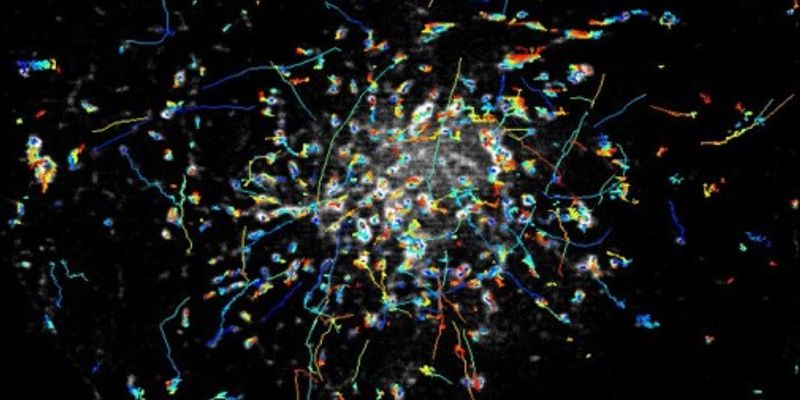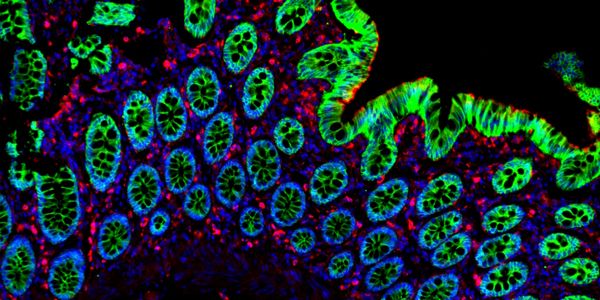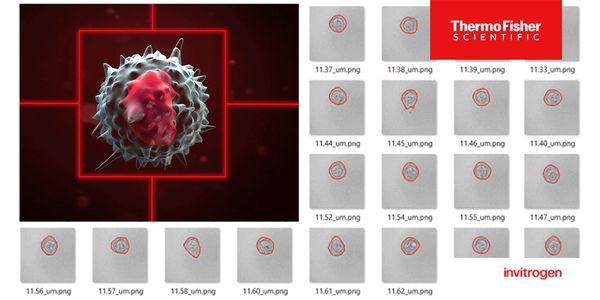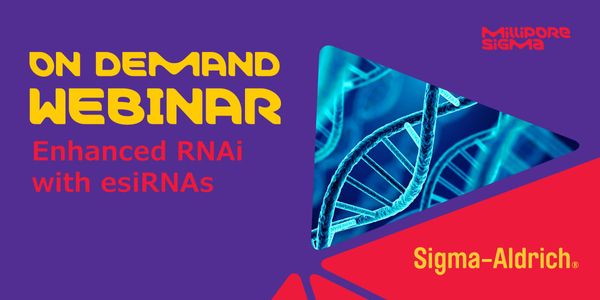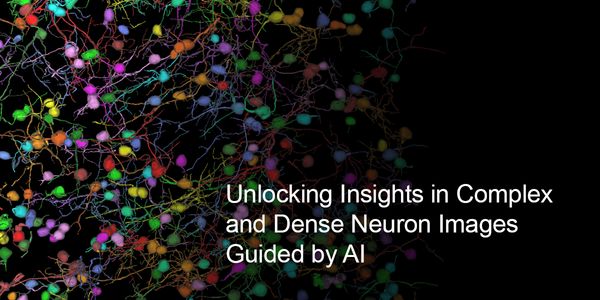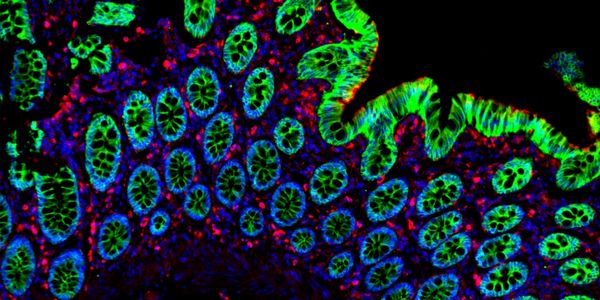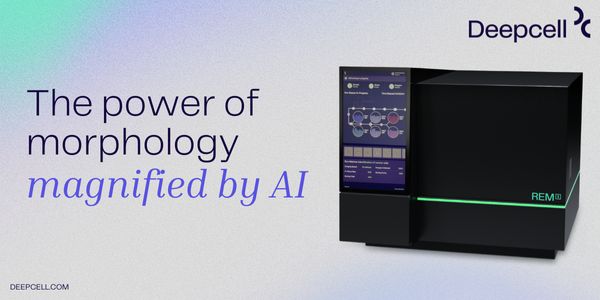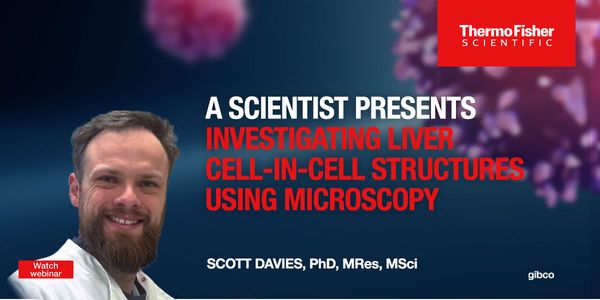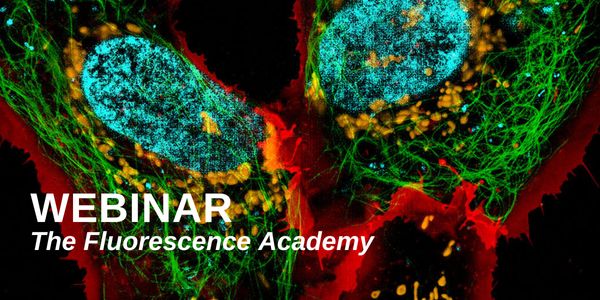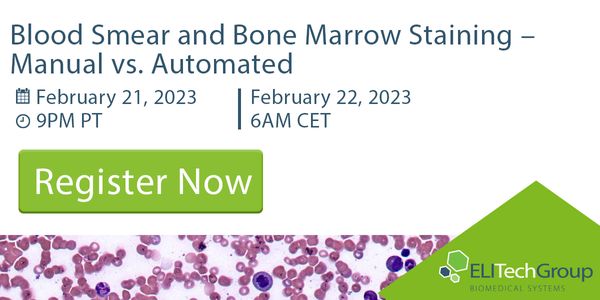Live Cell Imaging
Live Cell Imaging: the study of living cells using time-lapse microscopy. It is used by scientists to obtain a better understanding of biological function through the study of cellular dynamics.
-
SEP 12, 2023 | 8:00 AMSPRm (Surface Plasmon Resonance Microscopy) is a novel technology that enables label-free and real-time measurements of the binding affinity and kinetics of small molecules to G protein-coup...AUG 29, 2023 | 7:00 AMC.E. CREDITSSpatialomics leverages multiplex imaging to achieve translational profiling of tissue specimens by assessing the relative spatial orientations of biological structures with RNA and protein e...Speaker: Dr. Leticia Montoya, Ph.D., Chemistry and BiochemistrySponsored By: Thermo Fisher ScientificJUL 26, 2023 | 8:30 PMDifferences in how users gate populations within experiments are major sources of variability in flow cytometry data analysis. Incorporating automated image analysis can substantially reduce...JUL 26, 2023 | 8:00 AMDifferences in how users gate populations within experiments are major sources of variability in flow...JUN 29, 2023 | 7:55 PMRNA interference (RNAi) offers a fast and easy system to study gene functions. However, the traditionally used small interfering RNAs (siRNAs) can exhibit pronounced and problematic off-targ...JUN 28, 2023 | 8:00 AM3D morphological analysis of neurons often requires using different imaging modalities, capturing multiple types of neurons and inspecting neurons in a range of densities. These complexities...JUN 20, 2023 | 10:00 AMC.E. CREDITSSpatial biology enables researchers to characterize combined molecular information and spatial...JUN 15, 2023 | 8:00 AMC.E. CREDITSELISA (Enzyme-Linked Immunosorbent Assay) is a powerful and well-established method that enables researchers to detect and quantify a wide range of soluble substances, such as peptides, prot...JUN 13, 2023 | 10:00 AMAchieving consistent AAV quantification with the QuantStudio Absolute Q AutoRun dPCR Suite Accurate quantification of AAV vectors is crucial for quality control and timely decision-making du...Speaker: Kimberly Gomez , Himani Patel , Raquel Muñoz-Garcia, PhDSponsored By: Thermo Fisher ScientificJUN 08, 2023 | 9:00 AMC.E. CREDITSIn the emergency department, distinguishing between bacterial and viral infections can be challenging, leading to inappropriate use of antibiotics that may contribute to the development of b...JUN 07, 2023 | 9:00 AMJoin us for an introduction to the Deepcell Platform, an instrument that combines advances in high-resolution imaging, deep learning foundation models to illuminate morphology in all its dim...JUN 06, 2023 | 9:00 AMC.E. CREDITSTransmission electron microscopy reveals the architecture of cells at nanometer resolution, but chemical fixation severely warps their native structure. The true ultrastructure of cells can...MAY 09, 2023 | 1:00 PMC.E. CREDITSDate: May 09, 2023 Time: 5:00am (PDT), 8:00pm (EDT), 2:00pm (CEST) Advances in high content imaging (HCI) have improved the use of cell culture to make a large number of comparisons within i...MAY 02, 2023 | 8:00 AMC.E. CREDITSAbstract Learning Objectives Define a tertiary lymphoid structure in human cancer Describe the tumor microenvironment factors that influence the formation of tertiary lymphoid structures Ide...Date: April 26, 2023 Time: 8:00am (PDT), 11:00am (EDT), 5:00pm (CEST) The heart is a 380-million-year-old organ, yet we do not have a complete understanding of the molecular landscape in the...
APR 05, 2023 | 1:00 PM
C.E. CREDITS
Date: April 04, 2023 Time: 10:00pm (PDT), Date: April 05, 2023 Time: 2:00am (EDT), 7:00am (CEST), 1:00pm (SGT) This seminar provides an overview of fluorescence microscopy in cancer research...
MAR 30, 2023 | 8:00 AM
C.E. CREDITS
Date: March 30, 2023 Time: 8:00am (PST), 11:00am (EST), 5:00pm (CET) Join the Gibco Cell Culture Heroes webinar featuring Heather Beasley, PhD as she presents "SLC25A46 as a Novel Mitoc...
Spatial mapping of pain-associated G-Protein coupled receptors and bio-marker localization in mouse brain using RNAscope HiPlex v2 and RNA-Protein Co-Detection Assays....
Speaker:
Sayantani Basak, PhD
MAR 08, 2023 | 8:00 AM
C.E. CREDITS
Date: March 08, 2023 Time: 8:00am (PST), 11:00am (EST), 5:00pm (CET) Engineered nucleases like the CRISPR-Cas9 system provide researchers with powerful tools for the manipulation of the geno...
MAR 07, 2023 | 9:00 AM
C.E. CREDITS
Date: March 07, 2023 Time: 9:00am (PST), 12:00pm (EST), 6:00pm (CET) The ability to synthesize and sequence vast numbers of DNA constructs is a cornerstone of modern high-throughput biologic...
MAR 01, 2023 | 8:00 AM
Date: March 01, 2023 Time: 8:00am (PST), 11:00am (EST), 5:00pm (CET) Characterizing metastasis remains key for understanding and eradicating cancer. The study of circulating tumor cells (CTC...
FEB 22, 2023 | 9:00 AM
C.E. CREDITS
Date: February 22, 2023 Time: 9:00am (PST), 12:00pm (EST), 6:00pm (CET) Circular plasmid DNA has traditionally been used as a stable and efficient vector for gene expression and HDR-mediated...
FEB 21, 2023 | 9:00 PM
Date: February 21, 2023 Time: 9:00pm (PST) February 22, 2023 6:00am (CET), 10:30am (IST) This is both a general overview on the advantages of automation and specifics like the diagnosis of l...
FEB 15, 2023 | 7:00 AM
Date: February 15, 2023 Time: 7:00am (PST), 10:00pm (EST), 4:00pm (CET) While not all microscopy samples can fluoresce, all can scatter light, and this scattered light can be imaged. This ha...
Speaker:
Philipp Kukura
, Francesco Reina
, Matthew Kose-Dunn
, Phil Allen
Sponsored By: Teledyne Photometrics
SEP 12, 2023 | 8:00 AM
SPRm (Surface Plasmon Resonance Microscopy) is a novel technology that enables label-free and real-time measurements of the binding affinity and kinetics of small molecules to G protein-coup...
AUG 29, 2023 | 7:00 AM
C.E. CREDITS
Spatialomics leverages multiplex imaging to achieve translational profiling of tissue specimens by assessing the relative spatial orientations of biological structures with RNA and protein e...
Speaker:
Dr. Leticia Montoya, Ph.D., Chemistry and Biochemistry
Sponsored By: Thermo Fisher Scientific
JUL 26, 2023 | 8:30 PM
Differences in how users gate populations within experiments are major sources of variability in flow cytometry data analysis. Incorporating automated image analysis can substantially reduce...
JUL 26, 2023 | 8:00 AM
Differences in how users gate populations within experiments are major sources of variability in flow...
JUN 29, 2023 | 7:55 PM
RNA interference (RNAi) offers a fast and easy system to study gene functions. However, the traditionally used small interfering RNAs (siRNAs) can exhibit pronounced and problematic off-targ...
JUN 28, 2023 | 8:00 AM
3D morphological analysis of neurons often requires using different imaging modalities, capturing multiple types of neurons and inspecting neurons in a range of densities. These complexities...
JUN 20, 2023 | 10:00 AM
C.E. CREDITS
Spatial biology enables researchers to characterize combined molecular information and spatial...
JUN 15, 2023 | 8:00 AM
C.E. CREDITS
ELISA (Enzyme-Linked Immunosorbent Assay) is a powerful and well-established method that enables researchers to detect and quantify a wide range of soluble substances, such as peptides, prot...
JUN 13, 2023 | 10:00 AM
Achieving consistent AAV quantification with the QuantStudio Absolute Q AutoRun dPCR Suite Accurate quantification of AAV vectors is crucial for quality control and timely decision-making du...
Speaker:
Kimberly Gomez
, Himani Patel
, Raquel Muñoz-Garcia, PhD
Sponsored By: Thermo Fisher Scientific
JUN 08, 2023 | 9:00 AM
C.E. CREDITS
In the emergency department, distinguishing between bacterial and viral infections can be challenging, leading to inappropriate use of antibiotics that may contribute to the development of b...
JUN 07, 2023 | 9:00 AM
Join us for an introduction to the Deepcell Platform, an instrument that combines advances in high-resolution imaging, deep learning foundation models to illuminate morphology in all its dim...
JUN 06, 2023 | 9:00 AM
C.E. CREDITS
Transmission electron microscopy reveals the architecture of cells at nanometer resolution, but chemical fixation severely warps their native structure. The true ultrastructure of cells can...
MAY 09, 2023 | 1:00 PM
C.E. CREDITS
Date: May 09, 2023 Time: 5:00am (PDT), 8:00pm (EDT), 2:00pm (CEST) Advances in high content imaging (HCI) have improved the use of cell culture to make a large number of comparisons within i...
MAY 02, 2023 | 8:00 AM
C.E. CREDITS
Abstract Learning Objectives Define a tertiary lymphoid structure in human cancer Describe the tumor microenvironment factors that influence the formation of tertiary lymphoid structures Ide...
Date: April 26, 2023 Time: 8:00am (PDT), 11:00am (EDT), 5:00pm (CEST) The heart is a 380-million-year-old organ, yet we do not have a complete understanding of the molecular landscape in the...
APR 05, 2023 | 1:00 PM
C.E. CREDITS
Date: April 04, 2023 Time: 10:00pm (PDT), Date: April 05, 2023 Time: 2:00am (EDT), 7:00am (CEST), 1:00pm (SGT) This seminar provides an overview of fluorescence microscopy in cancer research...
MAR 30, 2023 | 8:00 AM
C.E. CREDITS
Date: March 30, 2023 Time: 8:00am (PST), 11:00am (EST), 5:00pm (CET) Join the Gibco Cell Culture Heroes webinar featuring Heather Beasley, PhD as she presents "SLC25A46 as a Novel Mitoc...
Spatial mapping of pain-associated G-Protein coupled receptors and bio-marker localization in mouse brain using RNAscope HiPlex v2 and RNA-Protein Co-Detection Assays....
Speaker:
Sayantani Basak, PhD
MAR 08, 2023 | 8:00 AM
C.E. CREDITS
Date: March 08, 2023 Time: 8:00am (PST), 11:00am (EST), 5:00pm (CET) Engineered nucleases like the CRISPR-Cas9 system provide researchers with powerful tools for the manipulation of the geno...
MAR 07, 2023 | 9:00 AM
C.E. CREDITS
Date: March 07, 2023 Time: 9:00am (PST), 12:00pm (EST), 6:00pm (CET) The ability to synthesize and sequence vast numbers of DNA constructs is a cornerstone of modern high-throughput biologic...
MAR 01, 2023 | 8:00 AM
Date: March 01, 2023 Time: 8:00am (PST), 11:00am (EST), 5:00pm (CET) Characterizing metastasis remains key for understanding and eradicating cancer. The study of circulating tumor cells (CTC...
FEB 22, 2023 | 9:00 AM
C.E. CREDITS
Date: February 22, 2023 Time: 9:00am (PST), 12:00pm (EST), 6:00pm (CET) Circular plasmid DNA has traditionally been used as a stable and efficient vector for gene expression and HDR-mediated...
FEB 21, 2023 | 9:00 PM
Date: February 21, 2023 Time: 9:00pm (PST) February 22, 2023 6:00am (CET), 10:30am (IST) This is both a general overview on the advantages of automation and specifics like the diagnosis of l...
FEB 15, 2023 | 7:00 AM
Date: February 15, 2023 Time: 7:00am (PST), 10:00pm (EST), 4:00pm (CET) While not all microscopy samples can fluoresce, all can scatter light, and this scattered light can be imaged. This ha...
Speaker:
Philipp Kukura
, Francesco Reina
, Matthew Kose-Dunn
, Phil Allen
Sponsored By: Teledyne Photometrics
